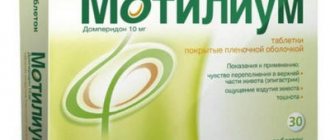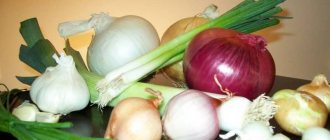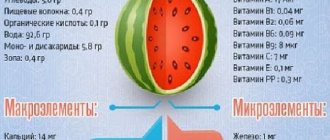This is a fragrant herbaceous perennial with small flowers that are collected in inflorescences. There is a legend that talks about love, deceit and the creation of mint. The patroness of streams and springs, in ancient Greek myths the young nymph Mente was the beloved of Hades. But his wife, offended by their relationship, poisoned Menta. And as soon as the nymph drank the poisoned drink, she immediately disappeared, but a juicy mint bush appeared in her place.
Peppermint is a human creation, an artificially bred plant that is rich in:
- menthol and essential oils;
- phytoncides;
- tannins;
- vitamins;
- carotenes;
- microelements.
Good to know
Herbalists should take note: KP’s guide to the healing properties of plants
Healing properties of mint
The plant has antibacterial properties, due to which signs of the disease are suppressed and associated phenomena such as heartburn and cramps are eliminated. The aromatic herb can be found in almost every garden; it grows quickly, standing out among other plants for its aggressiveness and unpretentiousness.
This fragrant plant contains menthol, which is an essential oil. It is better to collect the medicinal plant before the flower stalks are released; at this time, the leaves and stems of mint contain the largest amount of valuable substances.
During the period of treatment with mint, digestion is improved, attacks of nausea are reduced, the emotional background is straightened, and discomfort in the stomach is eliminated.
Since time immemorial, mint has been credited with miraculous properties that help prolong youth and life in general.
What is the plant useful for?
The beneficial properties of mint were described by ancient Roman doctors and scientists.
The effect of mint on the body
- Antiseptic and antibacterial properties reduce the inflammatory process in the stomach.
- The choleretic effect helps digest food.
- Thanks to its antispasmodic effect on the smooth muscles of the stomach, mint relieves pain.
- A mild sedative effect relieves emotional stress. Cures stress-related gastritis.
Mint in medicine
The components of the plant are used in pharmaceutical practice. Menthol is included in many certified medications.
Eating mint
The beneficial properties of the culture have been used for the following gastrointestinal diseases:
- acute and chronic gastritis;
- intestinal infections;
- biliary dyskinesia;
- stomach ulcer;
- diarrhea.
How to take mint for gastritis
The aromatic plant has one distinct quality: it successfully fights the cause of gastritis - the bacterium Helicobacter pylori. However, the healing properties of mint extend to the entire digestive system.
Due to the action of menthol oil, appetite is stimulated, and food begins to be absorbed faster and better, while heartburn is suppressed.
The therapeutic effect is achieved through complex treatment with medications and mint infusions, decoctions and tea.
With increased acidity
Due to an increase in the level of hydrochloric acid, a patient with gastritis develops heartburn and belching, “hunger” pain, and bowel dysfunction is observed. Mint suppresses these negative phenomena, but its intake should be limited to small doses, otherwise the stomach juice will be released too actively.
It is advisable to prepare a suitable drink in this case based on mint, yarrow, St. John's wort and dill seeds. The ingredients are mixed in equal proportions, except for mint, which should be taken in double volume.
You need to take 3 tablespoons of the mixture and add a liter of water. Prepare the drink in a water bath for 1.5 hours. Take the cooled liquid on an empty stomach for two weeks. It is not recommended to store the drink for more than two days; it should only be consumed fresh.
With low acidity
Patients with gastritis and low acidity experience aching pain, burning and a complete lack of appetite during exacerbations. In such cases, mint tea is used to relieve painful symptoms.
This simple but healing drink is prepared from mint, in the amount of two tablespoons and a liter of water. The leaves of the plant should be poured with boiling water and left for 15 minutes. Use a thermos for this purpose. Take tea in the morning on an empty stomach and before bed.
To enhance the effect, chamomile, knotweed, and valerian are brewed into tea along with mint. All ingredients are taken in equal proportions and brewed in a thermos until the morning.
With atrophic gastritis
All diseases associated with high acidity lead to thinning of the gastric mucosa.
The diagnosis becomes more complex and dangerous, since any atrophic manifestations take longer to treat and can cause complications in the form of ulcers and erosions.
For home treatment, a decoction based on several medicinal plants is suitable. You need to take:
- 25 g mint;
- 10 g flax seeds;
- 25 g cumin;
- 25 g yarrow;
- 50 g St. John's wort;
- 25 g plantain;
- 25 g angelica.
All herbs are poured into 1 liter of water, brought to a boil, cooled and filtered. The medicine is taken 1/3 glass before meals once a day.
Peppermint in the diet: are there any contraindications?
Back to list Previous article Next article
07.02.2018
Tags:
peppermint
Vote
Peppermint is often used as an additional flavoring ingredient in drinks; it is present in some dietary supplements, cosmetics, medicines, and refreshing chewing gum. But not all people know what exactly its beneficial properties are and how to use it correctly.
The main feature of peppermint is the stimulation of cardiovascular activity. This is its main property, so you can safely include it in your daily menu, however, due to its specific taste and abundance of active substances, mint is consumed in very small quantities.
It has a good effect on blood circulation and relieves spasms. Sometimes people experience pain in the left side of the chest, which is caused precisely by spasms that occur, for example, with stress, anxiety, or uncomfortable positions during sleep. It is recommended to make good tea, not very strong, but with the addition of this unique natural component.
If you analyze the composition of heart drops and tablets, most of them will contain extracts of this plant.
In second place in terms of intensity of action is the sedative effect. Peppermint tea is recommended for normalizing sleep, getting rid of depression, and for people who are depressed. You shouldn’t believe that life’s troubles will seem less significant if you drink alcohol. This is an erroneous opinion, because mint tea has much more effective and beneficial properties, and alcohol cannot compare with it in its ability to improve the psycho-emotional background.
Mint is also useful as a “beauty ingredient”. They recommend making tinctures and decoctions from it, rinsing your hair, and it will be strong and healthy. Tinctures are useful not only for hair, but also for skin, so you can make it a rule to wash your face not with ordinary tap water, but with tincture. The skin will be healthy, ruddy, its tone will increase and, most importantly, the dark circles under the eyes will gradually disappear.
However, experts recommend consulting with a doctor before consumption to eliminate the risk of contraindications. For example, it is not recommended to consume it if you are prone to varicose veins or have blood pressure below normal. There are no contraindications for external use. If there are scratches, cuts, or itching, then you can safely disinfect the affected areas with the tincture, since mint also has a pronounced antibacterial effect.
Back to list Previous article Next article
Harvesting the plant
To grow mint, special skills and agrotechnical knowledge are not required. She does not need your care and is able to independently make her way to life, even to the detriment of other garden plants.
The optimal time for collecting medicinal herbs is mid-summer; until this time, valuable qualities are concentrated in the plant. Mint greens should be dried in a suspended state. Mint should be stored in canvas bags or glass containers. It may not lose its properties for up to two years.
Benefits of peppermint for gastritis
Peppermint was bred by crossing two wild species. The main beneficial substance of the plant is menthol, which is part of the volatile essential oil in the leaves and inflorescences.
In folk medicine, mint is used as an anti-inflammatory and choleretic agent. Mint oil, tinctures and drops are industrially obtained from the leaves, stems, and inflorescences of plants. The components are used in medical practice, cosmetology, and the perfume industry. Mint leaves are used for culinary purposes for gastritis.
Use for gastritis
Decoctions and water infusions from the leaves and flowers of the plant are used for abdominal pain, flatulence, and bloating. A decoction of mint has a calming effect and helps with nervous excitability, characteristic of asthenic syndrome in gastritis.
The drink also has an antimicrobial and antiseptic effect and fights the causative agent of the disease.
Fresh juice squeezed from mint leaves has an antispasmodic and analgesic effect for gastritis, colitis, and gastric ulcers. Mint juice is a remedy against nausea, which manifests itself in gastritis with increased secretion and gastric ulcer.
Recipes with mint
Complications of gastrointestinal pathologies can be prevented with the help of aromatic tea, mint infusion and other natural remedies. We offer the most effective recipes, tested in practice, for your consideration.
Decoctions
You can take either dry mint herbs or its fresh leaves. 20 g of leaves are poured with boiling water and then simmered in a water bath for 15 minutes. Next, the solution is infused and consumed several times a day.
It is better to take spearmint and Korean mint in the morning on an empty stomach, lemon balm after three hours, and drink peppermint throughout the day.
Infusions
A medicinal infusion can be prepared either from mint or from other types of plants: chamomile, sage, yarrow, St. John's wort. To prepare, you will need a small spoon of herb and 200 ml of water.
Leave the mixture for half an hour and take a tablespoon before meals. This is an excellent prevention of any diseases of the digestive system.
Peppermint leaf infusion
Doctors' reviews about peppermint
Olga Zorina, pharmacist, pharmacology teacher, editor-in-chief of MedCorr:
– Peppermint is actively used for diseases of the respiratory tract: pharyngitis, laryngitis, tracheitis and runny nose. It is also a sedative and is used for insomnia and neurotic conditions.
Peppermint has proven itself especially well in the treatment of skin diseases: eczema of various etiologies, atopic dermatitis, neurodermatitis, urticaria, etc.
Elena Korsun, candidate of medical sciences, head of the department of herbal medicine at the Institute of Mathematics and Mathematics of RUDN University, head of the educational and health center at the National Academy of Sciences:
– Peppermint is one of the most useful medicinal plants. In addition to menthol, the plant contains a whole list of useful substances: flavonoids, antioxidants, tannins, vitamins A and C, group B, organic acids, resinous compounds, sugars, microelements, namely sodium, phosphorus, magnesium and even calcium.
Conclusion
Mint helps relieve abdominal pain, nausea, and flatulence. Mint can be used both for gastritis with high acidity and for gastric or duodenal ulcers.
Before using mint-based products, you must undergo examination and obtain permission from a specialist. A gastroenterologist will tell you whether it is permissible to take mint decoctions and infusions for a specific form of gastritis.
When starting to treat a disease with mint, you should not forget about following a diet and abstaining from prohibited foods.











